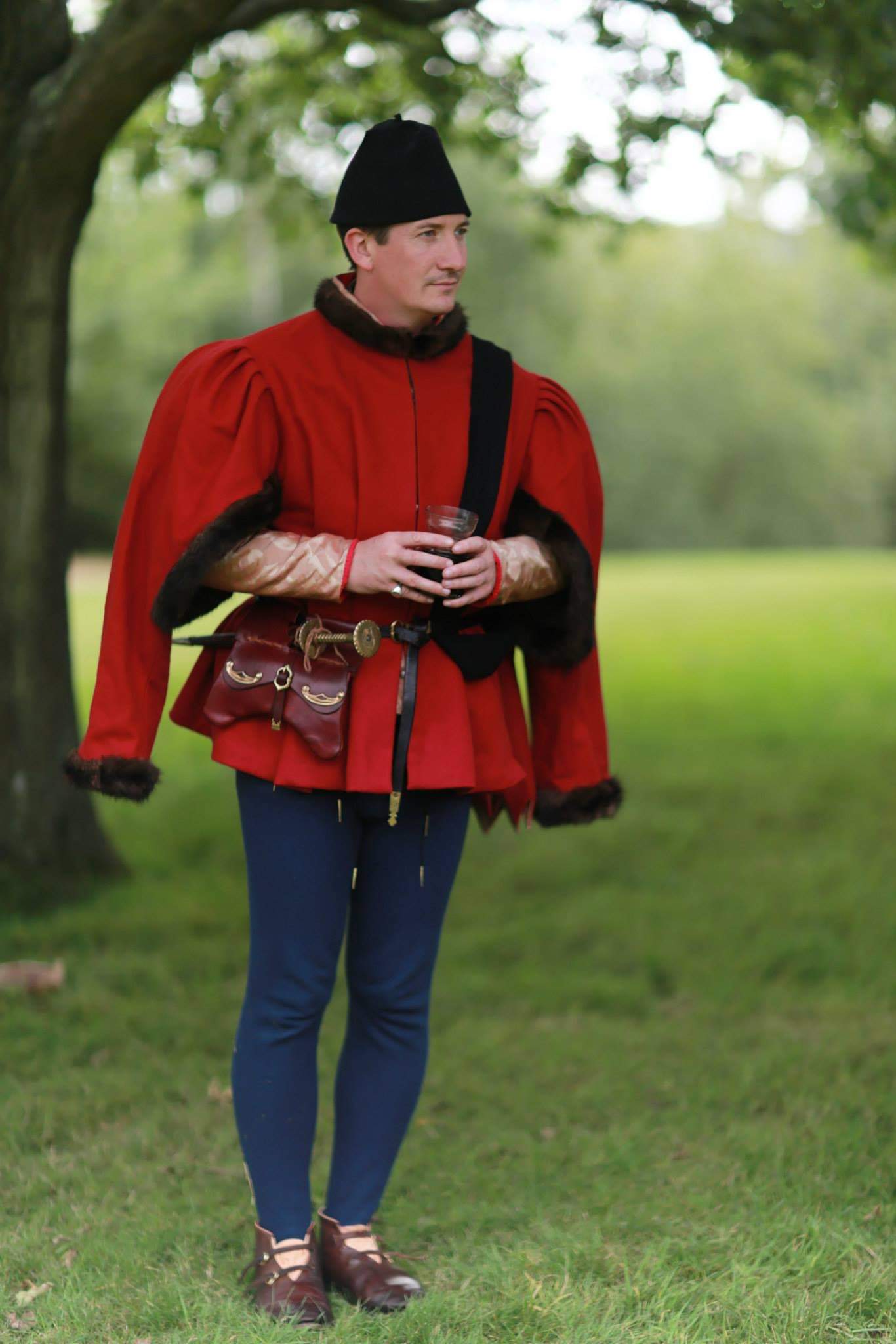
15th Century Linen Medieval Kirtle Peasant or Townswoman Etsy 15th century fashion, Medieval
Starting from medieval fashion ending at the swinging sixties, this section covers British fashion from the Normans through medieval and middle ages to the end of the 15th century. Day Clothes about 1050 This man and woman (left) date from about 1050, just before the Norman Conquest in 1066.

www.sartorium.pl Medieval clothing peasant, Medieval clothing, European outfit
1550-1600 in European fashion English opulence, Italian reticella lace ruff, (possibly) Polish ornamentation, a French farthingale, and Spanish severity: The "Ermine Portrait" of Elizabeth I Fashion in the period 1550-1600 in European clothing was characterized by increased opulence.

Costume History 14251485 15th century fashion, Renaissance fashion, Medieval fashion
The front was also cut very wide, but instead of being gathered in pleats it was heavily padded. German Men`s dress 15th century. Toward the middle of the 15th century the sleeve-holes of the jacket were very wide (Fig. 219), and the sleeves, which were not very wide, were cut to fit these wide sleeve-holes (Fig. 220).

15th Century Burgundian Gown at Cloak’d and Dagger’d 15th century dress, Sca dress, Medieval dress
Medieval Clothing Medieval Clothing Learn about the Medieval Clothes that were worn during the entire Medieval Period. Discover the Medieval Clothing Worn by Royalty, Nobility, Clergy, Peasants & Much More! Anglo Saxon Clothing

15th century working class woman 15th century clothing, Medieval clothing, Century clothing
Men's attire in the 15th century was created to fit the masculine physique and indicate social position and employment. Understanding the basic elements of this clothing is crucial for those interested in recreating historical fashion. The doublet was one of the most prevalent clothing worn by males during this period.

15th Century at Cloak’d and Dagger’d
OVERVIEW In the first years of the war-torn fifteenth century, fashion was a battleground where rulers and courtiers lay claim to power with the display of luxury textiles, elaborate dagging and fanciful personal emblems. Throughout the decade, the fashions launched at the court of France influenced the rest of Europe.

15 cen Woman "Robe" dress, Central Europe (Burgundy) Historical dresses, Medieval dress
Fashion in 15th century Europe was characterised by a series of extremes and extravagances, from the voluminous dresses, the houppelandes with their curved floor-length sleeves to the revealing pantyhose of the Italian Renaissance. Hats, hoods and other headgear grew in importance and were adorned, draped, decorated and feathered.

Medieval nobilty fashion in 1450, 15th century. Costume History
Regional variations in fashionable clothing that arose in the 15th century became more pronounced in the sixteenth.

15th century costume and fashion history. 15th century clothing, Ancient greek clothing
1410-1419 1420-1429 1430-1439 1440-1449 1450-1459 1460-1469 1470-1479 1480-1489 1490-1499 Filmography Have a film to suggest that you don't see here? Contact us! Fifteenth Century Benigni, Roberto, and Massimo Troisi. Nothing Left to Do but Cry, 1984. http://www.imdb.com/title/tt0087814/.

German fashion in the 15th century. Men's Dress. Costume History
As prosperity grew in the 15th century, the urban middle classes, including skilled workers, began to wear more complex clothes that followed, at a distance, the fashions set by the elites.. By the first half of the 16th century, the clothing of the Low Countries, German states, and Scandinavia had developed in a different direction than.

Italy 1516 cen. Renaissance Mode, Italian Renaissance Dress, Costume Renaissance, Renaissance
Spanish fashion was ascendant in the 1550s, from the loose women's gown—the ropa —and the Spanish farthingale in women's dress to the narrow-cut jerkins and tight sleeves of Philip II and the must-have men's outerwear piece, the Spanish cape. Womenswear T he trends of the late 1540s continue in the early 1550s.

Medieval clothing, 15th century clothing, Historical clothing
Styles of the first two decades were a development and expansion of the Italian modes of the late 15th century. Young men wore white silk shirts, frilled and embroidered at the neck and wrists. Over this they wore an abbreviated tunic and close-fitting hose, which were often striped to delineate the masculine limbs.

15th century dress with silk sleeves, worn with a buttoned hood . Medeltidsveckan , Visby
Detail from Très Riches Heures du Duc de Berry. Fashion in the 15th century, in Europe was characterized by a series of extremes and extravagances, from the voluminous gowns called houppelandes with their sweeping floor-length sleeves to the revealing doublets and hose of Renaissance Italy. Hats, hoods, and other headdresses assumed increasing.

Reversible Medieval dress, Burgundian, 15th Century Medieval dress, Dresses, 15th century dress
Courts would often employ private fashion designers to clothe the royal family. A wall fresco of Ludovico Gonzaga and his Family and Court (Fig. 2) painted by Andrea Mantegna between 1465-74 elucidates what men wore in fifteenth-century Italian courtly circles. Men's clothing in this period enjoyed a wide range of colors.

Angele Plaisance/Diane Lynn in 15th century French working class gown. The gown is Dupioni silk
The fifteenth century saw transformations in the nature of costume and culture that are key to our understanding of Western fashion. Up until the fifteenth century, the clothing customs of most cultures had been determined by tradition, the availability of certain kinds of fabric, and the skill of the tailor.

Stock Photo 15th Century XV English costume of the Nobility 15th century clothing, 15th
Fashion in 15th-century Europe was characterized by a series of extremes and extravagances, from the voluminous robes called houppelandes with their sweeping floor-length sleeves to the revealing doublets and hose of Renaissance Italy. Hats, hoods, and other headdresses assumed increasing importance, and were draped, jeweled, and feathered .